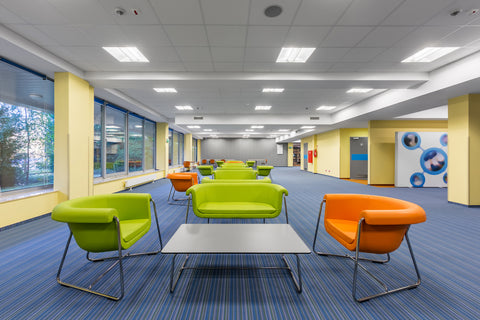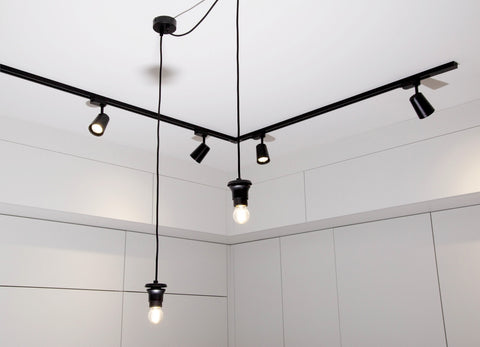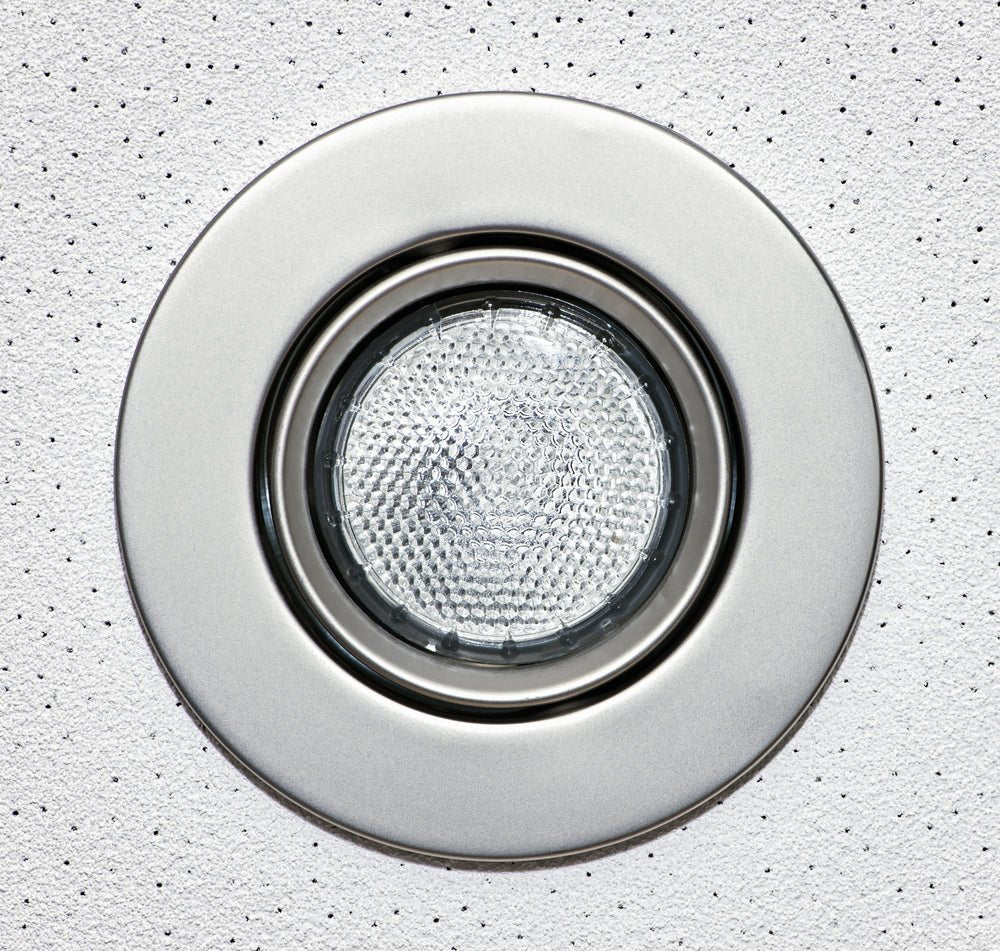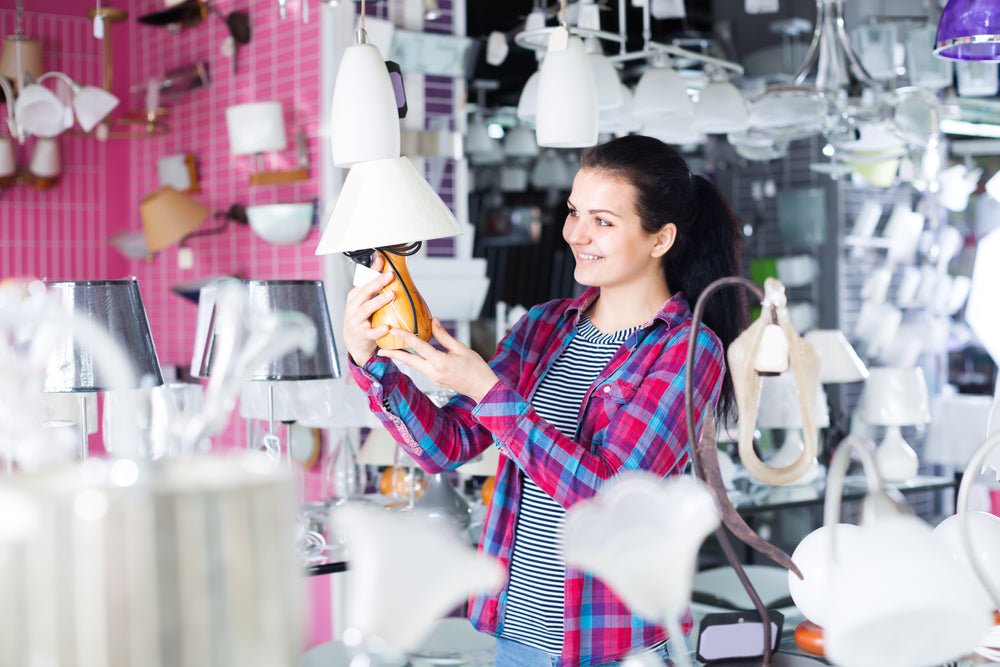Functional lighting is the use of lighting in a space to complement its purpose, rather than just for general illumination or aesthetics. Functional lighting can be used to create a mood or atmosphere, to highlight particular features and objects, or simply to provide daylight.
Functional lighting is an essential aspect of any lighting plan, especially in commercial and home office settings. While decorative lighting adds ambiance and character to a space, functional lighting provides adequate illumination for work and productivity. It is crucial to have a well-planned lighting scheme that balances both functional and decorative lighting.
For example, in an office setting, proper lighting can enhance work performance and reduce eye strain. Consider using task lighting such as adjustable desk lamps, under-cabinet lighting, and directional spotlights to provide targeted illumination where it's needed most. A well-lit conference room can also help facilitate meetings and presentations.
On the other hand, in a home office, natural lighting can be ideal, but when it is not available, a combination of overhead and task lighting can help create a bright and productive workspace. Decorative lights such as chandeliers or pendant lights can add character to the room, but they should not be the primary source of lighting.
When planning lighting for a home, decorative lighting can be used to create a welcoming and cosy atmosphere. Floor lamps, table lamps, and accent lighting can be used to highlight architectural features or artwork in a room. For instance, under-cabinet lighting in a kitchen can add a touch of ambiance while also providing task lighting for meal preparation.
A well-designed light plan considers the amount of natural light available and the room's intended use. It's also important to consider energy-efficient lighting options, such as LED bulbs, which can save on electricity bills in the long run. A combination of functional and decorative lighting can help create a well-balanced and visually pleasing home or office environment.
What are the Lighting Types?
Lighting types are different types of lights that can be used in various situations. The most common lighting type used in offices is fluorescent lighting because it is energy efficient and has a long lifespan. Halogen lighting is another common type of lighting used in offices as it provides bright, warm light and reduces glare. Fluorescent tube lights are also popular due to their energy efficiency and long lifespan. LED lights are becoming more popular because they provide a high level of brightness but also consume less energy compared to other types of lighting.
What is the Purpose of Functional Lighting?
Functional lighting is lighting that is used for a specific purpose. It is not just about making things look nice, it is about making them work better. Functional lighting can be in the form of task lighting or accent light. Task lights are lights that help you see and do your job better, while accent lights provide a little extra mood and atmosphere to help set the tone for the room.
Which Places Is Functional Lighting Most Preferred?
Functional lighting is a trend that has been growing in popularity for years now. It is not just about the looks, but also about the functionality. These lights are designed to be used in places where you need them and not just to add some extra style or visual appeal.
Functional lighting can be used to solve many problems, such as:
- Illuminate your workspace while you work.
- Keep an area well-lit even when the sun goes down such as the outdoors.
- Provide areas with no natural light with illumination by hallway lamps or task lighting fixtures.
Which Areas Is Functional Lighting Used Most In Houses?
The most common areas for functional lighting are hallways, stairways, foyers and patios. These are all places where people need to walk from one room to another. A well-lit hallway can make it easier for someone to move from one area of the house to another without bumping into a wall or furniture.
Functional lighting is also used in kitchens, bathrooms and laundry rooms as well as other areas of the house such as home offices and closets. It is important that these areas are lit well enough so that they do not become dark or uncomfortable places during the day or night when you are working or relaxing there.
Is It Important to Use Functional Lighting in Schools?
The most common use for functional lighting in schools is for task lighting, which can be used for reading, studying or other activities. The design of some classrooms means that these lights are essential for creating the right atmosphere to encourage learning.
What is the Importance of Functional Lighting in Decoration?
Functional lighting is a key element in the decoration of your home. It adds to the beauty of your house and makes it more comfortable at night.
Functional lighting can be installed in several ways, but the most popular is by using recessed lights. Recessed lights are designed to be fitted into a recess or cavity in the ceiling and then covered with a piece of glass or acrylic sheeting. The light is then hidden from view behind this covering, but still allows you to see through it if required.
The advantage of functional lighting is that it allows you to change its colour or brightness as you wish without having to change any other aspect of your décor. You can also adjust the height and angle of each lamp separately so they all fit together perfectly with each other and with your furniture.
What Kind of Function Does Functional Lighting Play in Adding Functionality to Spaces?
Functional lighting is a key element in adding functionality to spaces. It is used to illuminate a space, create moods and even help with safety. It can be used to highlight objects, create atmosphere and add drama. Think of it as a light that adds function to your home.
Functional lighting can be used in so many ways — to create atmosphere, highlight specific areas, illuminate the face of a clock or other items in your home, add accent lighting in smaller spaces and more.
How Important Is Functional Lighting in Cities?
Cities are not just about tall buildings. They need to be connected to the environment. The buildings need to be connected to each other and to the streets. Functional lighting is one of those things that can make a world of difference in how people perceive their surroundings. It is not just about providing light, but also making sure that you have enough light at the right time so that people don't feel like they are walking in darkness. Big cities are known to be always moving because even after the sun sets, it remains brightly illuminated. All thanks to a well-installed functional lighting system.
Is Functional Lighting Supportive in terms of Energy Saving and Resource Usage?
Yes, functional lighting can be supportive in terms of energy saving and resource usage. In fact, it is one of the main principles of functional lighting design to ensure that lighting is used efficiently and effectively while minimising energy consumption. It is designed to optimise energy efficiency and minimise resource usage while still providing high-quality lighting that meets the specific needs of the space.
One of the ways that functional lighting supports energy saving is through the use of energy-efficient light sources, such as LED lights. LEDs use significantly less energy than traditional incandescent or fluorescent lights, while still providing bright and clear illumination. This means that functional lighting can deliver high-quality lighting while consuming minimal energy.
Another way that functional lighting supports resource usage is by using lighting controls to regulate the amount of light that is used. For example, motion sensors can be installed to turn lights on only when someone is present in a room, and dimmer switches can be used to adjust the light output to the specific needs of the space. This reduces unnecessary energy usage and prolongs the lifespan of the lighting fixtures.
In addition, functional lighting design considers the specific needs and requirements of the space to ensure that the lighting is tailored to its purpose. This can include using task lighting to illuminate specific areas where work is done, or using daylight harvesting to take advantage of natural light and reduce the need for artificial lighting.
Does Functional Lighting Affect People's Mood or Physical State?
Yes, functional lighting can have an impact on people's mood and physical state. Lighting has been shown to affect a variety of physiological and psychological processes, including sleep, mood, alertness, and performance.
Functional lighting can have a significant impact on people's mood and physical state. By using lighting that is tailored to the specific needs of the space and the activities that take place within it, functional lighting design can promote a more comfortable, productive, and enjoyable environment.
For example, studies have shown that exposure to blue-enriched light in the morning can improve alertness and cognitive performance, while exposure to warmer, more yellowish light in the evening can promote relaxation and improve sleep quality. The intensity and colour temperature of light can also affect mood and emotional well-being, with brighter, cooler light promoting a more alert and energised state, and warmer, softer light promoting a more relaxed and calming state.
In addition, functional lighting can be used to enhance specific tasks or activities, such as reading, working on a computer, or preparing food. Proper task lighting can improve visual acuity and reduce eye strain, leading to improved comfort and productivity.
Is the Benefit to Human Health Prioritised in Functional Lighting Projects?
In the past, the general consensus among lighting professionals was that a light fitting's purpose was to illuminate a room. However, as awareness of human health has increased, this is no longer sufficient. It is now understood that lighting serves as an indicator of a building's overall health and energy performance.
The benefits to human health are prioritised in functional lighting projects because they have an impact on both the quality of life for humans and their environment. The link between lighting and people's well-being is often overlooked; however, it is vital to understand how light affects our physical and mental wellbeing.
What Effect Does Functional Lighting Have for Employees and Customers in Corporate Spaces?
Functional lighting is the use of light to illuminate a specific purpose. This can be anything from providing illumination for work areas to illuminating storefront windows on the way to work. The key here is that functional lighting should help the user complete their task, not distract them or take their eyes off the task at hand.
The reason why functional lighting is so important is because it can impact your employees' productivity and their customers' experience. If your employees are not able to see clearly, they may feel discouraged about working in the space, which could lead to lower morale and productivity among your workforce. In addition, if you have customers who are trying to enter your business during peak hours but can't see what is happening inside due to poor lighting, they may decide against coming back again or even telling others about how bad it was when they were there before.


